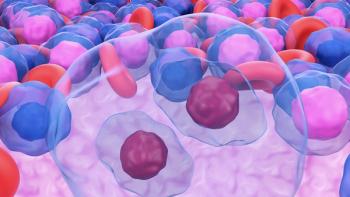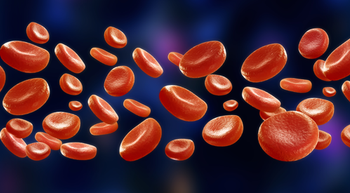
Muscle Mass Could Predict Risk of Chemotherapy Toxicities
A recent study evaluated how muscle mass can be used to predict which patients will experience toxicities from chemotherapy and to what extent.
Shlomit Strulov Shachar, MD
While chemotherapy is the standard treatment for many cancers, and has been for a long time, there are many side effects to the therapy that are well-documented and dreaded among patients with cancer.
Part of the difficulty with these toxicities is not knowing which patients will experience them and to what extent. Researchers at University of North Carolina (UNC) Lineberger Comprehensive Cancer Center have developed a tool that evaluates a patient’s muscle quantity and quality and could help predict which patients are at high risk for chemotherapy toxicities.
Earlier research has suggested that age-related muscle loss is linked to poor overall survival in patients with solid tumors. However, less information is available about the risks for developing treatment-related side effects based on muscle composition.
Hyman B. Muss, MD, a coauthor on this study, said, “More and more studies are showing that muscle mass, especially loss of muscle and function, or so-called sarcopenia, is associated with poor outcomes, poor survival, and more toxicity with cancer treatment. It may be that muscle mass is related to the metabolism of chemotherapy in your body, as well as your general fitness. So, people with a low muscle mass may simply be less fit, and their bodies don’t tolerate chemotherapy treatments as well. These patients may be especially vulnerable to treatment effects.”
The study evaluated medical data from 151 patients who were treated for early breast cancer at the NC Cancer Hospital between 2008 and 2013. Researchers analyzed abdominal CT scans to estimate fat and muscle composition in each patient’s body.
Using medical records, the researchers determined which patients had experienced serious chemotherapy side effects such as hospitalizations, gastrointestinal (GI) complications (including nausea and vomiting), depletion of important blood cells, and nerve damage in the arms and legs (such as peripheral neuropathy).
Researchers found that patients with low muscle quality and quantity had a higher risk of blood-related toxicities, GI side effects, and peripheral neuropathy. When data were adjusted for age and body surface areas, patients with a lower measure of muscle quality and quantity had twice the risk of hospitalization.
Shlomit Strulov Shachar, MD, first author on the study, stated, “The formula currently used in clinical practice for chemotherapy dosing—body surface area—doesn’t really help us predict which patients will develop treatment-related toxicity. This study supports the concept that body composition may be more sensitive than the formula that has been used for decades to dose chemotherapy.”
Compared to other body composition measures, such as BMI and skeletal muscle gauge, this tool developed by the researchers at UNC has the potential to assist clinicians in determining chemotherapy dosing and lowering the risk of treatment side effects.
Shachar, a former UNC fellow and current oncologist in Israel, said, “For me, as a physician in the clinic, it’s very troubling when patients get toxicity from therapy. We need to deliver the best therapies we can with less toxicity. We need to think carefully about how to dose patients other than relying on just height and weight.”
Muss echoed this need, stating, “We need better ways of predicting who might be hospitalized for treatment side effects. If we can give a little less dose initially, we might be able to lower toxicities without sacrificing effectiveness. By improving the therapeutic index, we can retain the benefits while minimizing the risks of treatment.”
Shachar SS, Deal AM Weinberg M, et al. Body composition as a predictor of toxicity in patients receiving anthracycline and taxane based chemotherapy for early-stage breast cancer [published online ahead of print January 31, 2017]. Clin Cancer Res. doi: 10.1158/1078-0432.CCR-16-2266.
Newsletter
Knowledge is power. Don’t miss the most recent breakthroughs in cancer care.

















































































